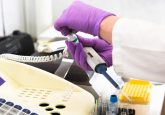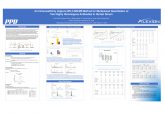A novel and non-invasive approach to drug and disease detection
Results published in the Journal of Breath Research demonstrate how collecting and analyzing externally-produced compounds in the lining fluid of the airways allows for non-invasive testing and monitoring.
Methadone was used as a test substance and the team utilized LC–MS to analyze breath samples. The team also investigated the impact of different breathing patterns.
Lead author, Göran Ljungkvist of the University of Gothenburg (Gothenburg, Sweden) explained: “Exhaled breath contains particles carrying non-volatile substances. The main components, lipids and proteins, are derived from the respiratory tract lining fluid. The collection procedure is non-invasive, can be repeated within a short time span and is convenient. The small mass sampled is, however, an analytical challenge. Nevertheless, exhaled particles are a new and promising matrix for the analysis of biomarkers.
“We took breath samples from 13 subjects who were undergoing methadone management, to explore whether traces of the drug could be detected via their breath, rather than using invasive techniques that disturb the integrity of the subject.
“We also wanted to discover the best method for collecting methadone particles in the exhaled breath, so our study compared two different sampling methods – electret filtration, and impaction.”
The electret filtration method potentially collected exhaled particles of all sizes, while the impaction method only collected particles in the size range of 0.5−7μm, known to reflect respiratory tract lining fluid from the small airways. Methadone was present in all samples when utilizing both methods, but the concentration of methadone in exhaled breath in the impaction method samples was less than one per cent of the concentration collected by the method based on filtration.
Commenting on the results, Ljungkvist explained: “The difference in collected amounts of methadone between the two methods was, however, huge. That raised secondary questions on the origin of the collected particles, possible contamination from oral fluid, the breathing pattern and finally the design of the collection device.
“The design of the device is crucial in many ways and it is likely that the huge difference in collected amounts is explained by the sampling of different particle size distributions,” he continued. “The device based on filtration also collects larger particles not collected by the method based on impaction. The design also influences the risk of contamination from oral fluid and losses of particles on their way to the actual collecting medium.
“However, we believe the very high amount of methadone collected by the filtration method is probably due to a considerable contribution of methadone from the central airways or oropharyngeal tract.
“Our results, and methods, could have implications for the analysis of endogenous and exogeneous compounds in the exhaled breath as biomarkers of systemic and lung diseases, as well as in development of new approaches to study human exposure to airborne contamination.”
Sources: Ljungkvist G, Ullah S, Tinglev A et al. Two techniques to sample non-volatiles in breath—exemplified by methadone. J. Breath Res. 12(1), 016011 (2017); https://phys.org/news/2017-12-drugs-disease.html





